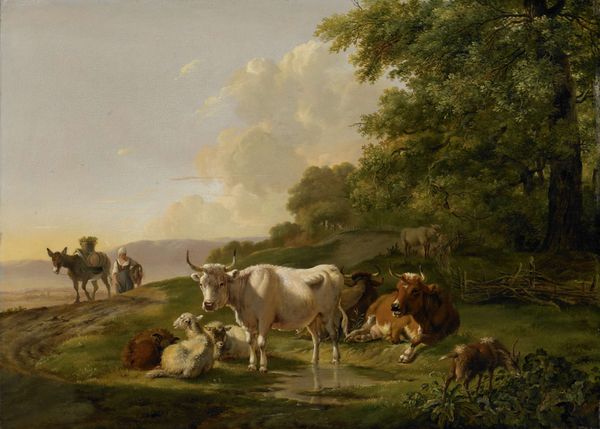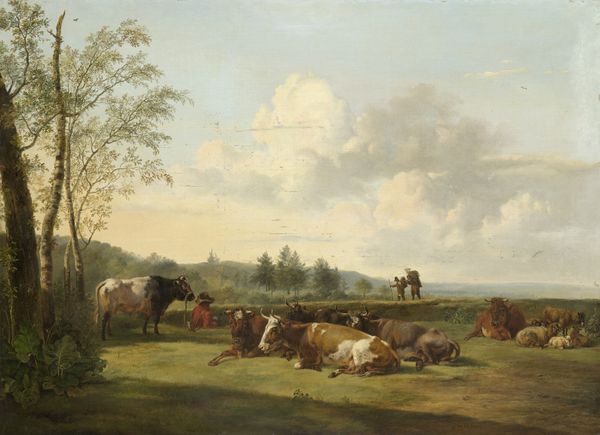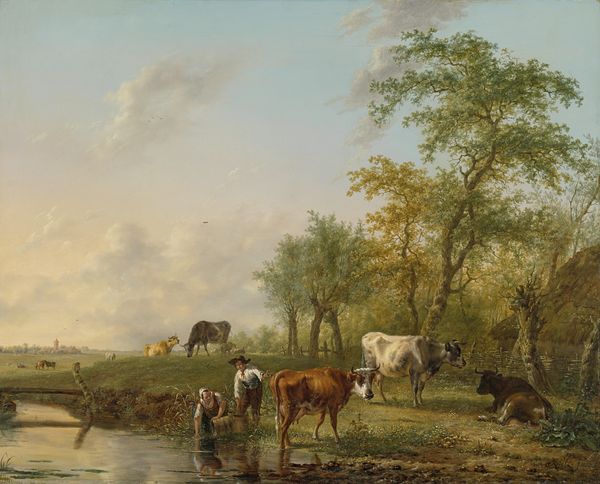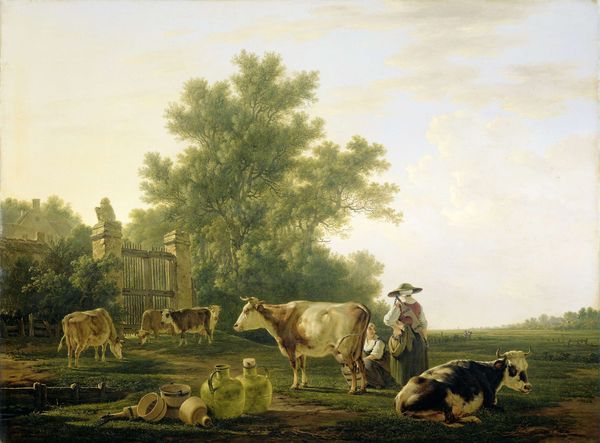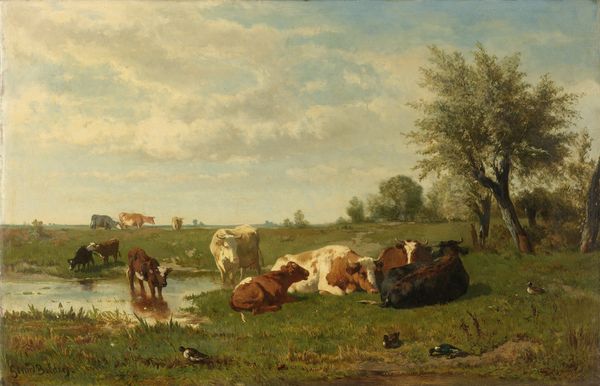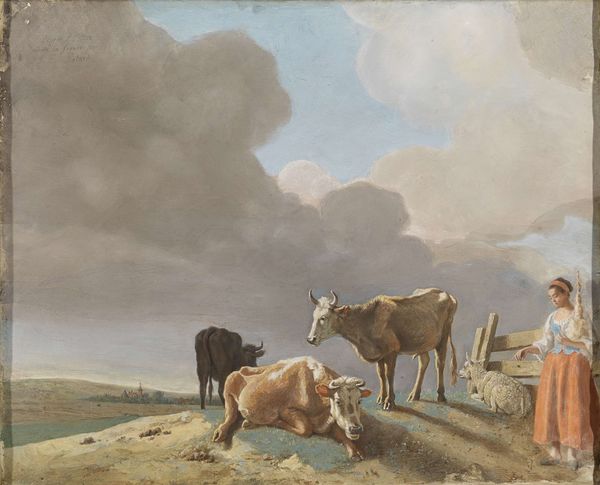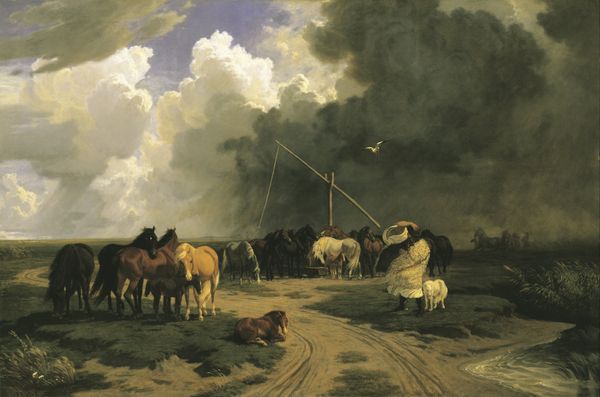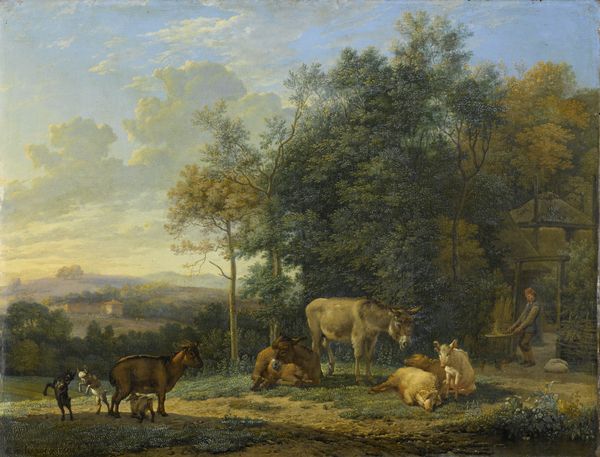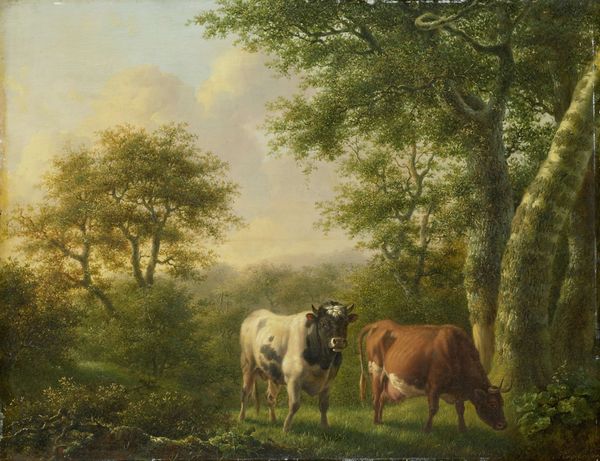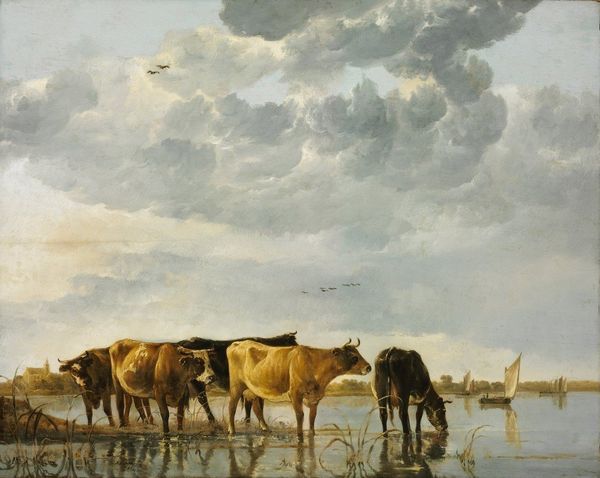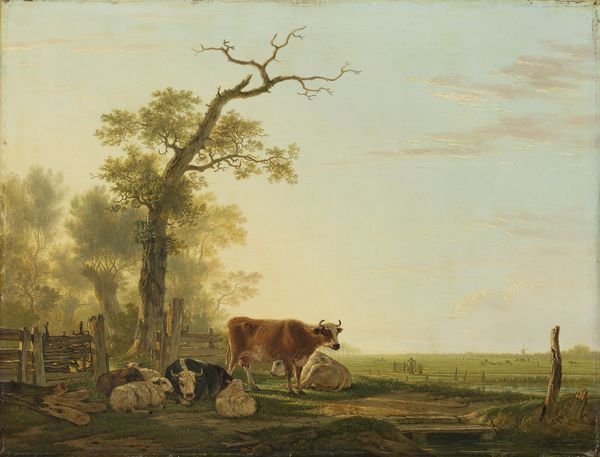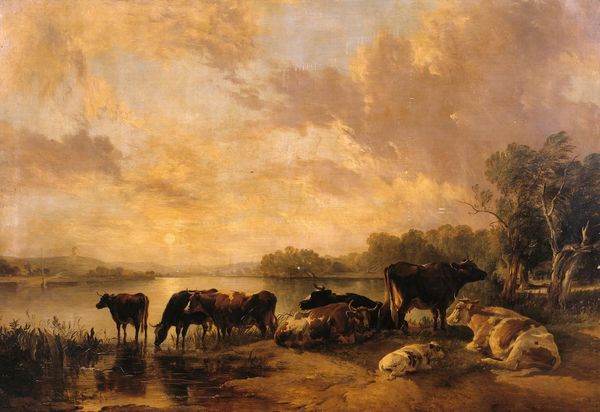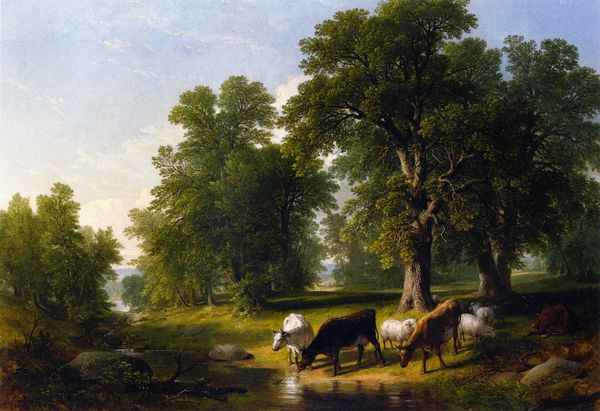
painting, oil-paint
#
portrait
#
painting
#
oil-paint
#
landscape
#
figuration
#
oil painting
#
romanticism
#
horse
#
genre-painting
#
realism
Dimensions: height 96 cm, width 122 cm, depth 7.5 cm
Copyright: Rijks Museum: Open Domain
Curator: Before us is "Meadow with Animals" by Jan van Ravenswaay, a work dating from around 1820 to 1837. Editor: It strikes me immediately by its luminosity, that Dutch light, bathing everything in a gentle glow. The composition seems deliberately arranged, almost staged. Curator: Indeed. This work presents a highly romanticized view of rural life, particularly concerning class dynamics. The shepherd boy is seemingly at peace, integrated with the animals, hinting at an idealized harmonious relationship between humans, nature, and labor. But this serenity obscures the harsh realities of rural poverty and child labor in the 19th century. The land itself has been sculpted, claimed, transformed by generations of peasants and nobility to sustain animal wealth and power. Editor: That's a very interesting perspective. I was struck by how Ravenswaay used compositional balance and light, carefully positioning each animal, as well as the shepherd boy, to guide the eye through the scene. Consider how the subtle diagonal created by the resting cattle directs your gaze to the boy. And those fluffy clouds mirroring the rounded forms of the grazing animals? Curator: Absolutely. Yet, that “balance” flattens very real hierarchies and suffering. While aesthetically pleasing, it's crucial to remember how paintings like this were often commissioned by wealthy landowners to glorify their estates, subtly reinforcing social structures that benefitted them. The painting aestheticizes rural existence into a commodity, to mask underlying issues. How is the "authenticity" of labour being represented for those outside of this labour class? Editor: A compelling point. And what about the realism versus Romanticism at play? This feels staged in that hyper-real way, that is meant to invoke something of an idealized vision of the rural landscape and an artificial connection to that landscape and working relationship with animals, while still seeking to remain representational. Curator: That tension, the very performance of realism, points to how such genre paintings became instrumental in shaping national identity and bolstering power. What a "real" rural landscape should mean is politically constructed, it masks centuries of class war over this very territory. Editor: Well, thinking about it now, there's more depth than just pleasant pastoral scenery, as Ravenswaay prompts us to confront these societal conditions. Curator: Precisely, art gives space to have difficult conversations! By contextualizing such images we are reminded that every depiction comes with underlying complexities worth discussing.
Comments
No comments
Be the first to comment and join the conversation on the ultimate creative platform.
